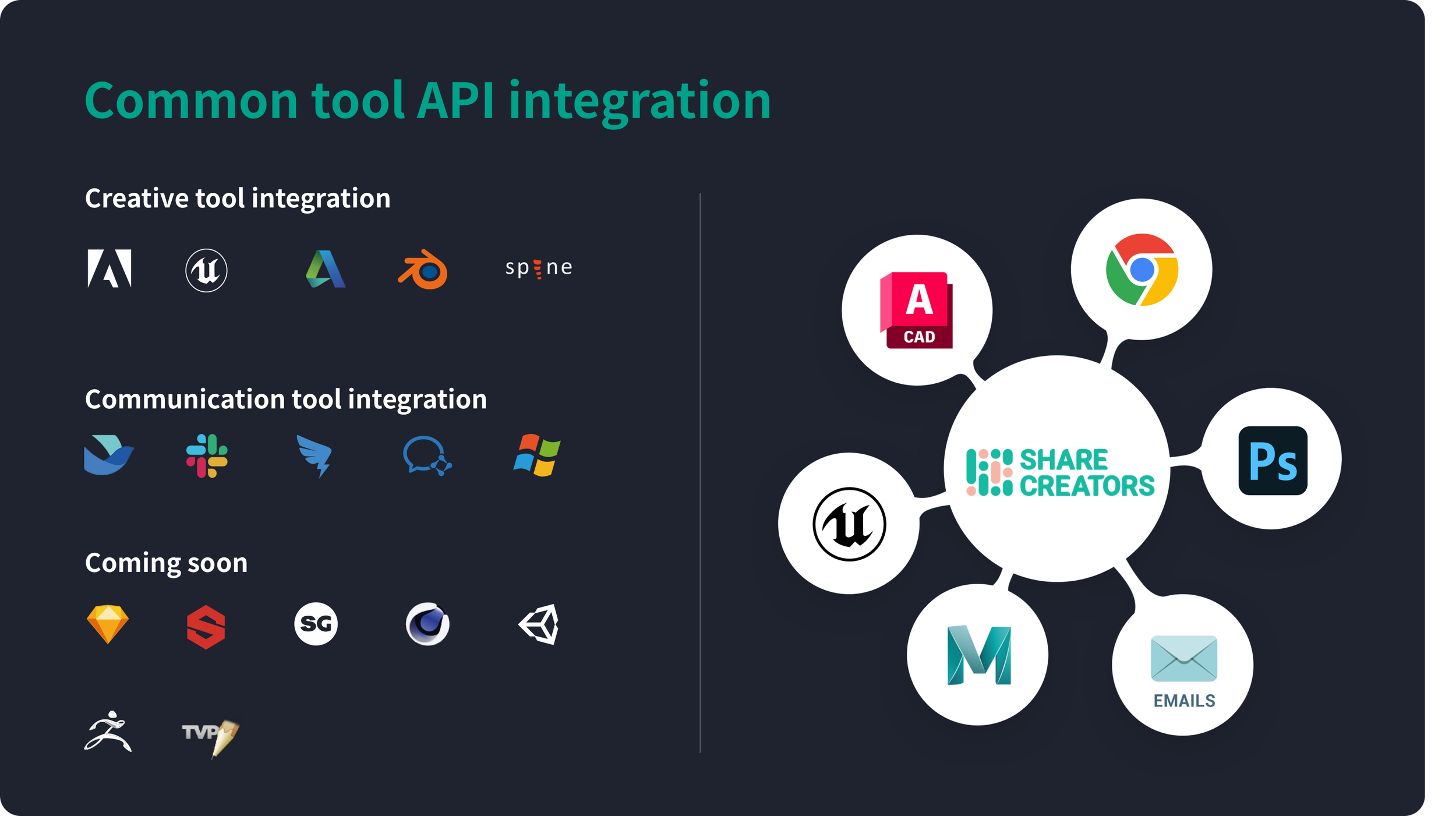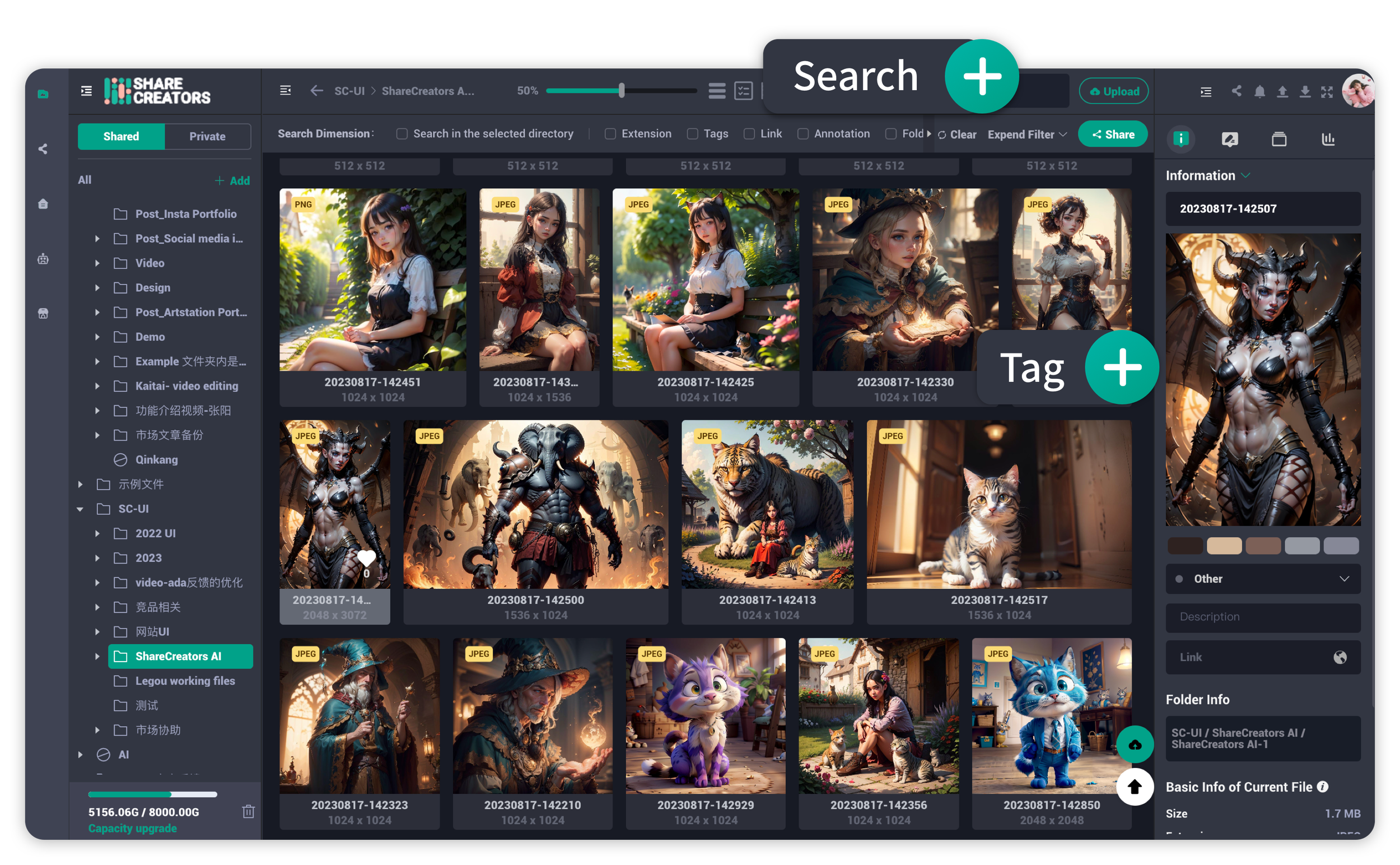Level Up Your Game Development Workflow with the Power of Game Asset Manager
Selecting the right game asset management software is crucial for smooth game development in a team or among multiple outsourcing companies.
When evaluating options, pay close attention to following features:
format support, visualization, search efficiency, version control, collaboration conveniences, scalability and integration with game development tools, and project management.
Enhancing Game Development: The Power of Game Asset Manager
1. What is Game Asset Management Software
2. Advantages of Using a Game Asset Manager
3. How to Choose Your Ideal Game Asset Manager
4. Best Game Asset Manager 2023 Recommendations
5. The Bottom Line
In the post-pandemic world of game development, digital asset management has become increasingly crucial. Game assets serve as the lifeblood of a game company and necessitate full preparedness for remote collaboration. From character models and textures to sound effects and environmental designs, the volume and complexity of game assets are staggering in the present day. We certainly don't want a data-erasing mishap like what occurred in Toy Story to happen to any of us. This is where a Digital Asset Manager tailored for game development can play a vital role in prevention.
I. What is Game Asset Manager?
Dedicated for the realm of game design, a Game Asset Manager is a centralized, organized solution designed to store, categorize, search, and manage game assets efficiently. These assets encompass everything from 3D models and textures of characters/levels/environments to audio files, scripts, and promotional materials. A digital asset management system for game design is the bridge that connects all the moving parts of a game creation and development, ensuring a seamless workflow.
II. Advantages of Using a Game Asset Manager in Game Development
Using a game asset manager streamlines digital data organization and version control, ensuring that creative content is efficiently managed and easily accessible to team members. It enhances collaboration by allowing for real-time feedback and annotations on assets, promoting effective communication and a shared creative vision. Additionally, it safeguards valuable intellectual property and accelerates the game development process, ultimately leading to improved productivity and a smoother workflow for game development teams.
Improved Workflow and Productivity:
Game development teams can save countless hours by quickly pinpointing and reusing assets, streamlining the creation process.
Enhanced Collaboration:
Collaboration tools within DAM systems promote teamwork and communication among artists, designers, and developers, leading to a smoother development cycle.
Cost-Saving and Time-Saving:
Avoid expensive asset duplication and wasted time searching for misplaced or useless assets. A game asset management software helps keep projects on track and on budget.
Scalability for Game Development Studios:
Game asset manager caters to the needs of indie developers and large game studios alike. Whether you’ve got multi-studios or in need for remote collaborations, it helps grow with your library of assets and team size anywhere, anytime.
Benefits ripple across different stages of game creation:
A game asset manager plays a pivotal role throughout the game development life cycle.
In the concept and preproduction phase, it efficiently organizes concept art and design documents, facilitating creative management.
During asset creation and game design, it enables collaboration among 3D modelers, texture artists, and sound designers, reducing redundancy and fostering a streamlined workflow.
In game development and testing, it ensures easy access to assets for programmers and level designers, promoting a seamless integration process. For marketing and distribution, it supports consistent branding across various platforms.
Additionally, for live-service games, it simplifies asset management for post-launch updates and expansions, enhancing the game's ongoing development.
III. Six Key Features of a Game Asset Management Software to Look for
Selecting the right game development asset manager is critical. Consider factors such as easy-to-use, integration options, collaboration features, and the ability to handle large media files efficiently. Game developers who have experienced success with digital asset management systems also emphasize the importance of a user-friendly interface and top-tier customer support.
Asset Organization and Categorization: The software should at least organize game assets by tags, type, level, version, and more, making it easy to locate and reuse assets across projects.
Tagging and AI tagging to Organize Game Assets
Metadata Management: Detailed data should not be omitted. A good game asset manager should be able to read and attach relevant metadata to assets, including descriptions, tags, and version history, ensuring that developers can easily search for and identify assets.
AI-powered Intelligence: This could be bonus feature. Just like deploying a “Google Image Search” AI bot for your LAN, users can easily track, locate, store, and share the digital assets they require through AI-powered search and snapshots. This simplifies the task of maintaining a consistent strategy from the preparatory stage, ensuring stylistic unity across the entire project.
Version Control and Collaboration: This is a must consideration. Game development is a collaborative process. Game asset manager enable version control and provide tools for teams to work efficiently, even in remote or distributed environments.
Version Control Feature of Blueberry Game Asset Manager
Integration Options: This is a core requirement. To provide smooth experience, the software should seamlessly integrate game asset manager with popular game development tools the likes of Photoshop, After Effect, Autodesk, SVN, and engines, such as Unity, Unreal and Godot, streamlining asset import and export processes.
Integration Feature of Share Creators Game Asset Manager
Security and Access Control: This is also a basic feature you should make sure to obtain. A standard DAM for game design should protect your valuable game assets with advanced security features. Control who can access, edit, or download assets to maintain data integrity.
IV. Best Game Asset Managers 2023 Recommendations
1.ShareCreators’ Blueberry DAM
Share Creators pulls out of the competition by leveraging the greatest strength of AI. It perfectly enhances search and recognition capabilities, making it easier to find files even if they are not well-named. This can be a significant time-saver in digital asset management.
Best Game Asset Management System - Blueberry DAM Interface
Our cutting-edge digital asset management software is tailored for businesses seeking efficient management of their digital assets. Our solution empowers clients to reduce expenses and enhance productivity with quick search capabilities, thereby boosting the reuse of assets, files access rate, etc. Ultimately, it ensures widespread accessibility to digital assets, catering to various business models and scales.
Pros:
1. Intuitive and User-Friendly with a steep learning curve in just 20 minutes;
2. Full Process Integration, from production tools to game engines ;
3. Comprehensive File Management with a wide range of digital file types;
4. Real-Time Collaboration, enabling seamless collaboration;
5. Full Process Integration with both upstream and downstream production tools;
6. Efficient AI Powered Search and Retrieval;
Cons:
It may price a bit higher than the average tools for better experience.
2. Perforce Helix DAM
Helix DAM instead of Helix Core
Perforce Helix DAM is totally different from Helix Core for its advanced asset visualization and review.
Key Features: Perforce Helix DAM is a robust version control system that is widely used in the game development industry. It offers powerful version control, asset management, and collaboration tools. It integrates well with popular game engines and development tools like Unity and Unreal Engine.
Pros:
Strong version control capabilities, seamless integration with game development tools, and excellent support for large studios.
Cons:
Beginners will face a steeper learning curve.
3. Unity Asset Store
Within the game engine ecosystem
Apart from what Unity engine, the company also provides professional asset store for game studios.
Key Features: Unity Asset Store is a marketplace and asset management platform for developers using Unity. It offers a vast library of assets, including 2D/3D models, textures, scripts, and more. You can purchase, import, and manage assets directly within Unity.
Pros:
Integration with Unity, a wide variety of assets, and ease of use.
Cons:
Limited to Unity users, assets may vary in quality.
The Bottom Line
In the world of game development, effective digital asset management is a game-changer. A Digital Asset Management (DAM) system designed for the unique needs of game development offers unparalleled benefits, from improved workflow and collaboration to substantial cost savings. To succeed in today's competitive gaming industry, invest in a DAM system and unlock the power of your digital assets.
Ready to elevate your game development workflow with a DAM system? Explore the benefits and features of leading DAM solutions for game development on Provider's Website today.







